Magelang's
mysterious chicken church
Jakarta Globe, May 07, 2014
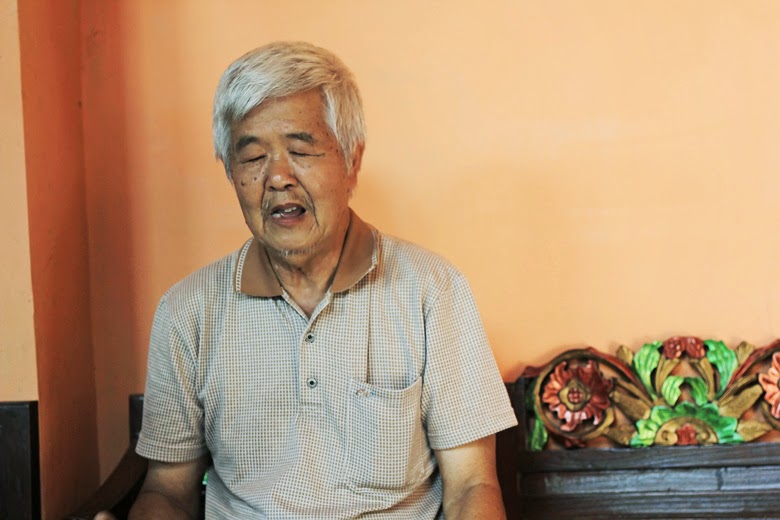 |
| Gereja ayam builder Daniel Alamsjah. (JG Photo/Julianne Greco and M. Arifin) |
A giant
bird structure nests quietly in the hills of Magelang, Central Java. Known
locally as gereja ayam , or chicken church, this building attracts curious
tourists and explorers and is the subject of many rumors and myths.
At a
glance, it is no surprise as to how this building earned its name. With its red
beak raised to the sky as if in mid-cluck, it looks like a giant chicken will
come to life at any moment. The building’s length, vaulted ceiling and
steeple-like head suggest the body of a church.
Long
abandoned and unfinished, the building has an eerie feel to it, like it could
belong on the set of some science fiction film or if it were once a place of
cult worship. The truth is not so far off; the story behind the massive bird
structure takes root in one man’s spiritual visions.
“I suddenly
got a vision of a place on a hill, built to worship God,” said Daniel Alamsjah,
67, the enigmatic building’s creator.
When
talking to Alamsjah, it is unclear how much of what he says is based on reality
or figments of his imagination, as his words seem to come from a dreamlike
trance. According to him, the chicken church is neither chicken nor church. The
building was actually constructed as a prayer house in the form of a dove.
 |
| Gereja ayam’s steeple. (JG Photo/Julianne Greco and M. Arifin) |
Alamsjah
says he was working in Jakarta in 1989 when his vision from the divine of a
giant prayer house on a hill first came to him. During Idul Fitri that year,
Alamsjah was walking around Magelang where his wife’s family lived when he came
across some land that had exactly the same view as in his vision.
“I prayed
all night there and I got a revelation that I must build the prayer house in
that spot.”
Despite
this sense of spiritual obligation, Alamsjah struggled with the decision to
actually act on the vision.
“‘God, I’m
no priest, this is not my place. I’m not a fundamentalist. I’m just a devout
practicing Christian,’ I thought to myself at the time. Another reason for my
hesitation was financial—I didn’t have a lot of money,” he says.
After
conversations with local landowners, Alamsjah decided to move forward with it
when the price was right.
 |
| Gereja ayam: a rear view. (JG Photo/Julianne Greco and M. Arifin) |
In early
1990 he got an offer to buy 3,000 square meters of land on Rhema Hill, located
between two villages, Kembang Limus and Karangrejo in Magelang for just Rp 2
million ($170). He decided to take it, making the payments in installments and
in the course of four years he eventually owned one hectare, Alamsjah says.
“Perhaps
because of my Christian faith, people thought I was building a church. But it’s
not a church. I was building a prayer house, not a church, but a place for
people who believe in God.”
Alamsjah
says a diverse set of people visited his prayer house. “Seven nationalities
were represented like countries including Japan and there were many people
there, not just Christians. Muslims were praying there too.”
One of the
local rumors surrounding Alamsjah’s prayer house is that the space was used for
rehabilitation, because the building’s dark basement is made up of about 12
small unfinished rooms that could be cells. Alamsjah confirms that the building
was used for rehabilitation, but those small rooms were designated as “private
prayer rooms” and not holding areas like rumors insinuate.
“The
rehabilitation that happened at this prayer house was for therapy for disabled
children, drug addicts, crazy people and disturbed youth who wanted to fight,”
he says.
 |
| The building has fallen into disrepair. (JG Photo/Julianne Greco and M. Arifin) |
Alamsjah
claims he has a background in therapy and is still working as a therapist, with
21 patients now living in his house. He is now based in a house nearby the
prayer house in Magelang because the trek up the hill to the prayer house is
too difficult for him in his old age.
The prayer
house closed its doors until a little after 2000, says Alamsjah due to the
construction costing too much, and the building remains unfinished to this day.
Alamsjah says he is looking to sell the building and has already communicated
with a Singaporean interested in turning his building into a villa for health
therapy, but has yet to receive a down payment.
For
Alamsjah, building the prayer house was an experience of self-discovery, but,
it is no longer practical for him to continue with the project. “In the process
I became more religious, but even if I wanted to continue building, I couldn’t
because I just don’t have the financing. I’m old and retired.”
Wasno, the
village head of Desa Gombong, corroborates Alamsjah’s story that Alamsjah
received community support when he first started his project.
“Before
Daniel built the prayer house, he asked surrounding community members if he
could make a building for housing different types of youth. He had around 30
people working on the construction and I was one of them,” Wasno said. He
confirms that construction ended because funding ran out, refuting rumors that
the building stopped because the community did not want it.
 |
| Gereja ayam’s interieor. (JG Photo/Julianne Greco and M. Arifin) |
Today,
Wasno benefits from people’s curiosity of gereja ayam. Since his house is right
at the base of the hill, he allows visitors to park in his lot for Rp 2,000.
Because of his positioning, Wasno is used to answering questions from curious
visitors about gereja ayam.
One
visitor, Jessica Peng, an American teacher living in Jogja, got the sense that
Wasno and family “are used to seeing people come and go.” Peng was struck by
the likeness of the building to a chicken and insists it looks nothing like a
dove.
“It’s no
surprise that everyone locally calls it gereja ayam because this is a case
where visual representation matters more than the actual motif.”
That gereja
ayam was once used as some underground rehabilitation center was a rumor Peng
heard from her friends. “There was definitely a vibe that it was a place where
a cult could gather.” Another thing Peng found odd was that for such a big
building there was only one entrance.
One of the
best parts of visiting gereja ayam is how suddenly imposing the building is on
the landscape, Peng says. “It’s kind of a hike to get up there, so I was just
concentrating on the path, then out of nowhere it’s towering over me. It’s an
all of a sudden thing.”
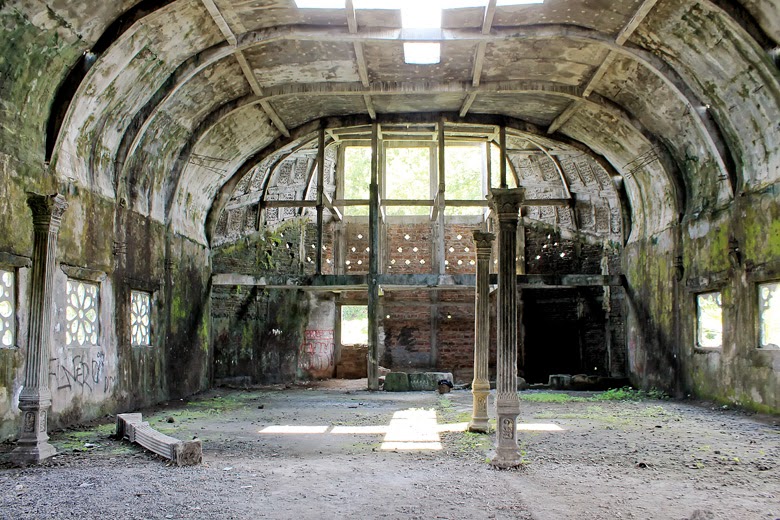 |
| Gereja ayam’ cross-shaped skylight. (JG Photo/Julianne Greco and M. Arifin) |
Peng says a
lot of expats have been inspired to trek up to gereja ayam by the social media.
She first learned of the building from her friend who posted on Facebook and
after her own trip, her posts on the social netwotking site led more of her
expat friends to explore it as well.
On the
Internet, there are many posts from visitors of gereja ayam. In all its
distinctiveness, it is fast becoming a popular site for exploring and photo
shoots. No longer a place for rehabilitation and prayers, gereja ayam remains
shrouded in mystery and is a source of intrigue for locals and visitors alike.
It also has
another function Alamsjah never intended; the building often houses young
couples in search of privacy, looking to get away from prying eyes, Wasno says.
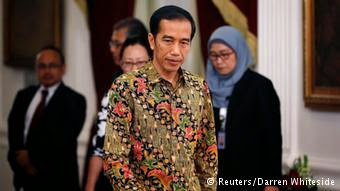
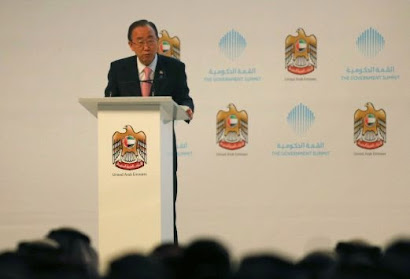



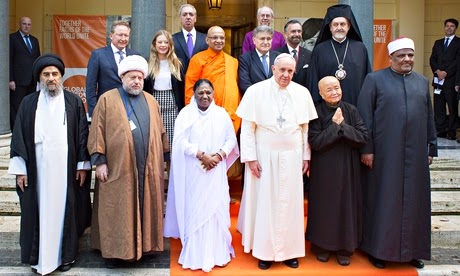
No comments:
Post a Comment